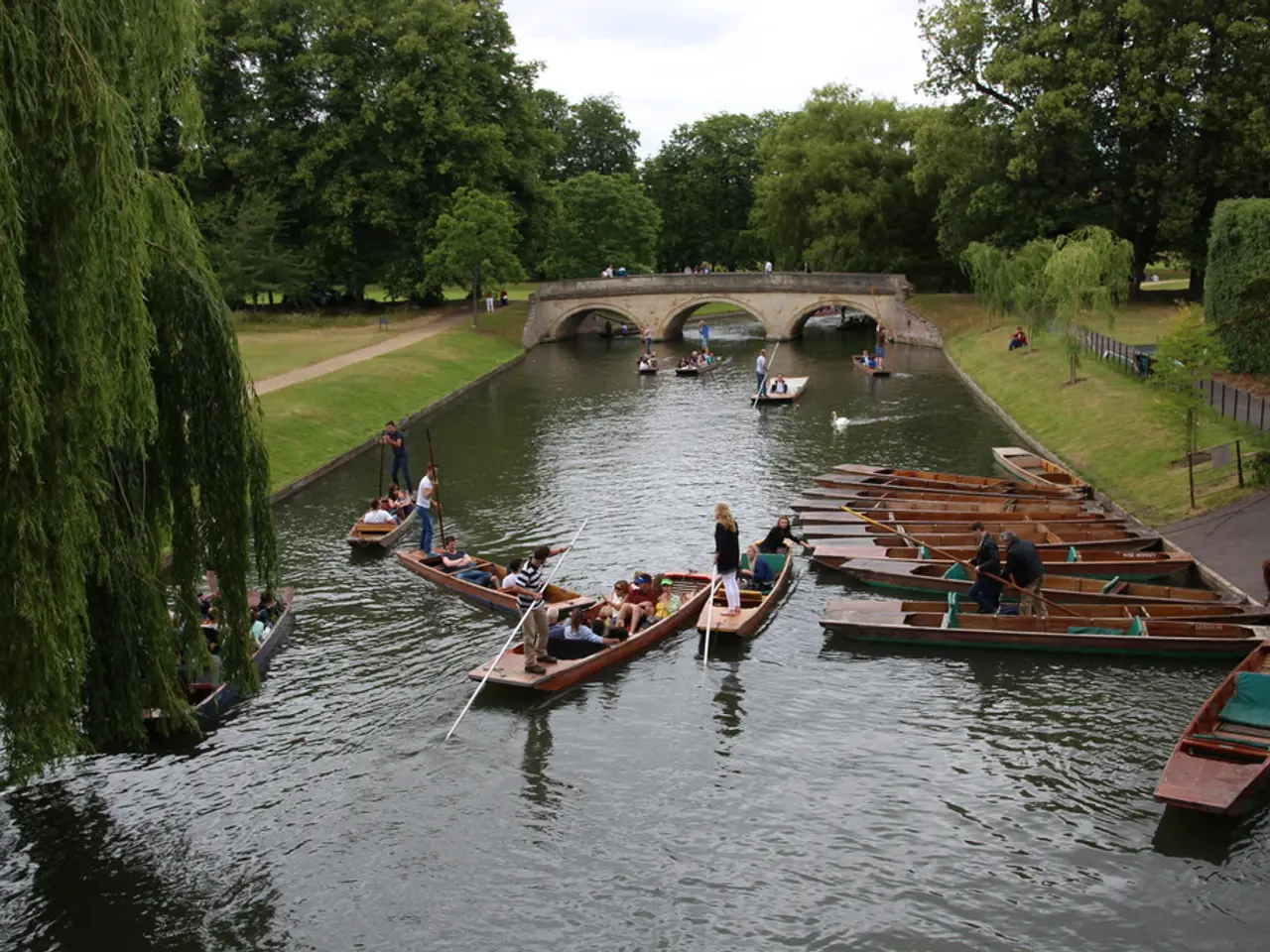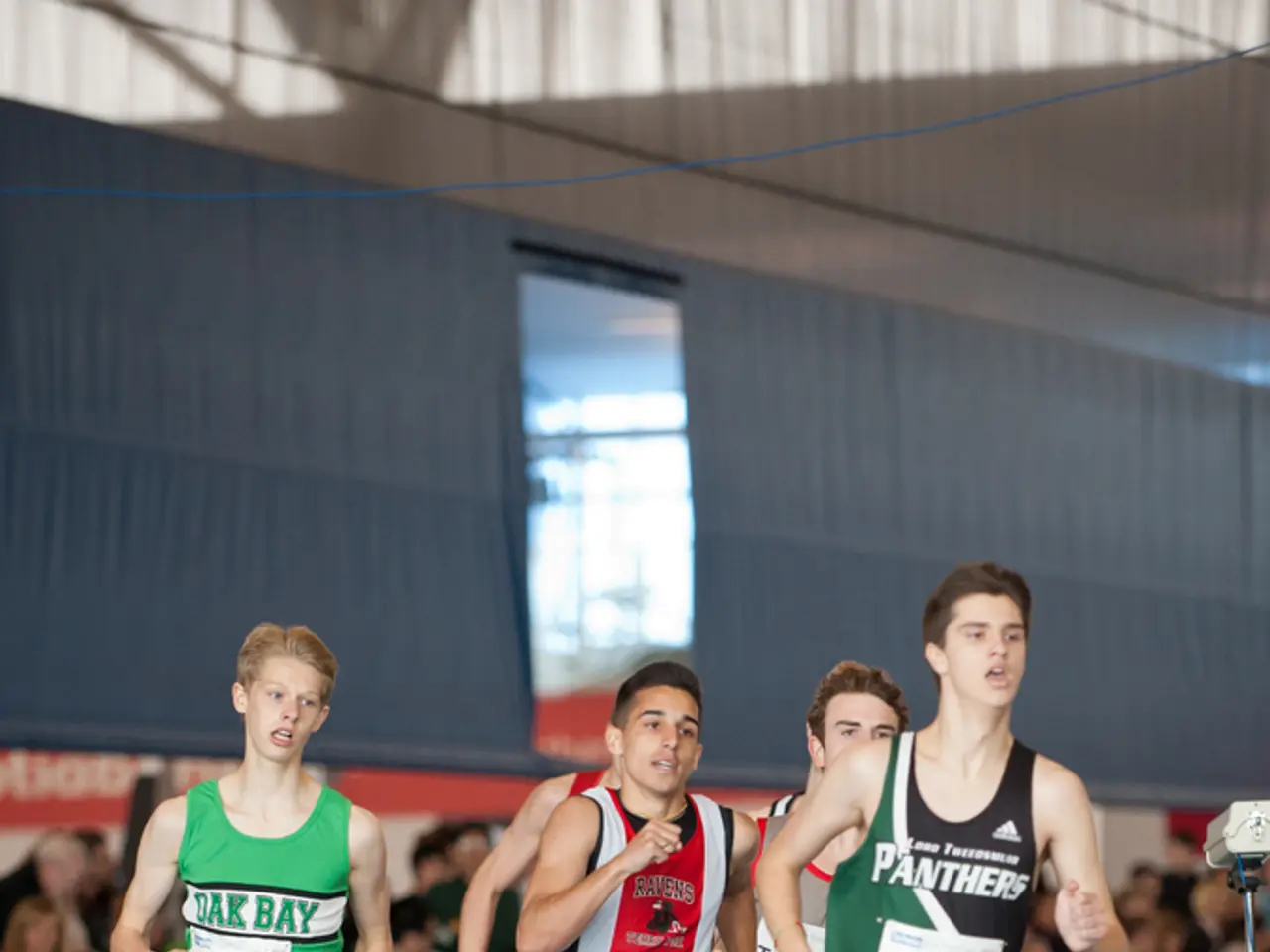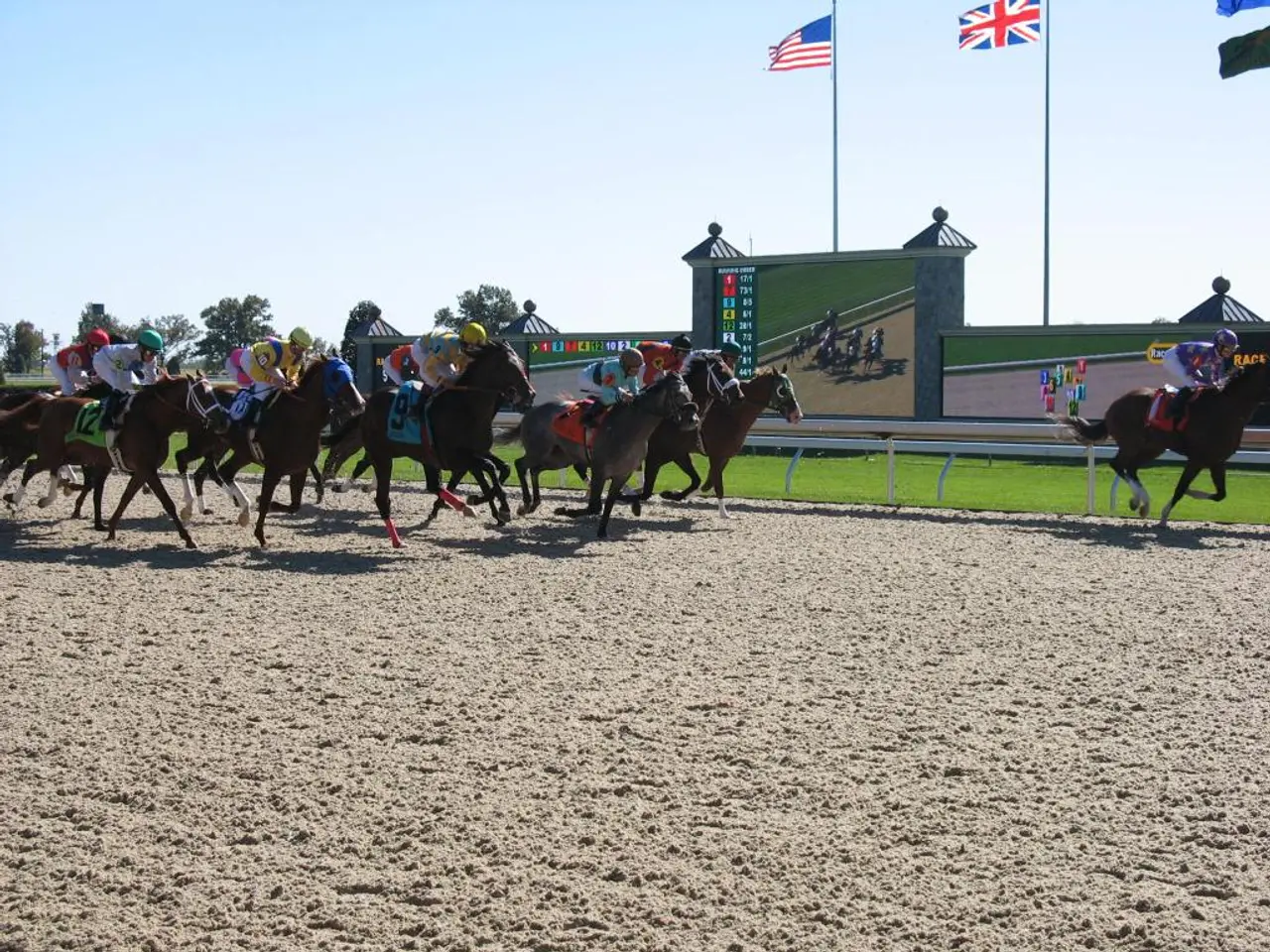Tips from sailing professionals to enhance your grasp of heel angles:
Maintaining the Optimal Heel Angle in Keelboats: Tips from Chris 'Twiggy' Grube
In the world of keelboat racing, maintaining a consistent angle of heel is crucial for success, as emphasised by Chris 'Twiggy' Grube, a renowned sailor and offshore racer. In an exclusive feature for the leading magazine for bluewater cruisers and offshore sailors, Grube shares his tips for achieving the ideal balance between speed and control.
Grube stresses the importance of active management of heel angle to ensure good flow over the rudder and keel foils for optimal grip and steering. On a J/70 keelboat, for instance, he aims for about 8° of heel in very light wind, 12° in full power conditions, and never exceeding 14°, as excessive heel can lead to slipping sideways and losing grip in the water due to its short keel.
Using instinct and feel is the most useful gauge of optimum heel, even with electronic heel angle monitors. However, having a designated 'heel angle monitor' on the boat can be beneficial for maintaining constant heel angle. The jib trimmer on the J/70 is the first to swing their legs inboard and go down to leeward in light conditions, as body weight is the main tool for maintaining constant heel angle.
In a gust or lull, pre-emptive adjustments are beneficial to minimise the required adjustments. In strong winds, adjusting the rig is necessary to vary power, with the backstay being the first point of adjustment. On the J/70, also tighten the vang and tension the Cunningham when adjusting the backstay. Pulling on the Cunningham tends to put the boat in a lower mode, so care should be taken when maintaining pointing ability.
In a crisis, stay calm, press 'reset', and work hard together to get the boat back in the groove as soon as possible. Avoiding the "stagger" is important when the boat starts to stagger in strong winds, requiring a quick reset and working hard together to get the boat back on its feet.
Feedback from the helmsman about what they're feeling through the rudder is also important. As a crew, moving in unison to lean out for a gust or inboard for a lull can put additional power into the boat, but care should be taken not to bring the boom end too far to windward of centreline or put the brakes on.
Accurate setup of the rig is crucial for achieving consistent heel angle. Someone on the boat should call out every gust and lull to help predict and pre-empt them. In strong winds, easing the sails is necessary to keep the boat moving, with the main trimmer easing the traveller and the jib trimmer also going out to keep an open slot. In the J/70, the jib trimmer often takes on this role, while in a Cape 31, it would likely be someone on the foredeck crew.
Developing a feel for the neutral helm and the right heel angle requires time spent on the water with the boat. Twiggy warns against the temptation to heel more to gain weather helm (which can improve rudder bite), suggesting that there are few shortcuts to getting comfortable with such a neutral helm other than more time in the boat.
The optimal heel angle varies by class and wind/wave conditions. For the J/70, it ranges from 8° in super-light conditions to 12° in full power conditions, with a maximum of 14°. Despite the J/70's neutral helm with little feel in the rudder, it's essential to resist the temptation to let the boat heel more to leeward for more weather helm and bite, as it can reduce control.
In conclusion, maintaining a consistent angle of heel is a key factor in keelboat racing success. By following Grube's tips for precise trimming, sailors can achieve the ideal balance between speed and control, ensuring they're always ready to take on the next challenge on the water.
Sports such as keelboat racing require maintaining a consistent heel angle for success. For instance, a J/70 keelboat aims for about 8° of heel in very light wind, 12° in full power conditions, and never exceeding 14° to prevent slipping sideways and losing grip in the water.






